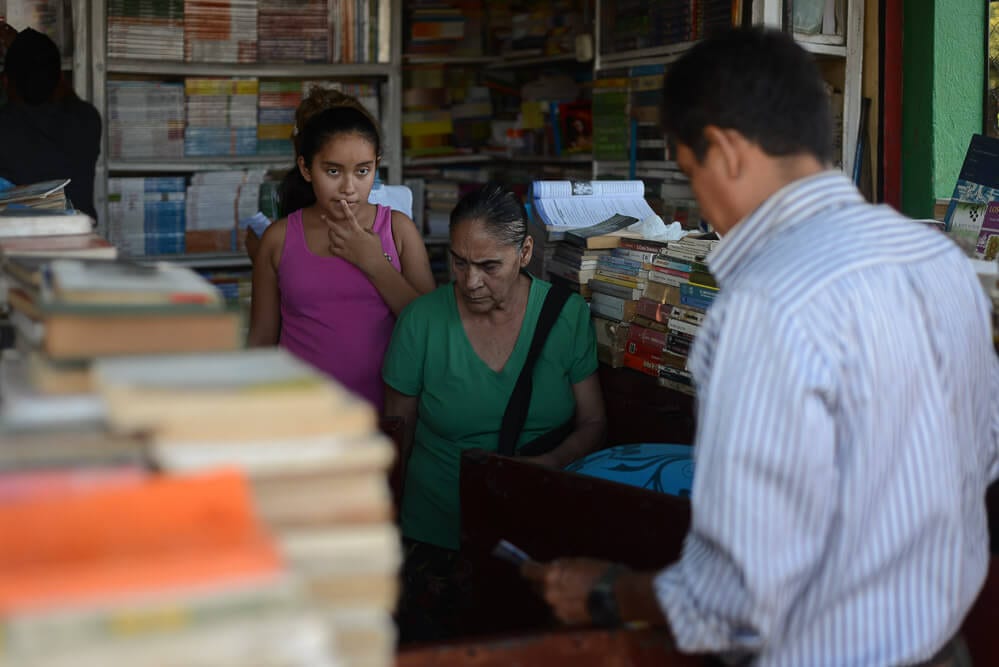Nicaragua’s Central Bank Launches an “Atlas” of Economic Activity
For the first time the country has a digital map, detailing the economic activities and services available on a national level.
By Maynor Salazar (Confidencial)

HAVANA TIMES – Did you know that in Managua business establishments generate 197,000 jobs? Or that in the capital itself there are 228,281 homes, of which approximately 15,247 receive family remittances?
You almost certainly didn’t have the faintest idea of these statistics; nevertheless, thanks to the results of the Digital Cartography and Census of Urban Structures carried out by the Nicaraguan Central Bank (BCN), an “atlas” of this information is only several clicks away.
The digital cartography includes maps with aerial photographs of all of Nicaragua’s municipalities and a census of the urban structures (houses, churches, parks, businesses, centers of production and public buildings such as health centers, hospitals, schools, high schools, parks and bus terminals).
Information about these structures includes the economic activities carried out in them, such as small stores, beauty parlors, mechanic’s shops or eating places. It’s a socio-economic characterization that includes the working population, their gender, the scale of operations, use of technology and administrative registries.
In Masaya, according to the study, the predominant economic activities are related to service, commerce and small shoe factories. These economic establishments generate 35,855 jobs, of which 18,203 are taken by men and 17,652 by women.
The census began in 2013 and finalized in 2016. Nonetheless, Ovidio Reyes, president of the Central Bank, explained that due to the growth of economic activity the maps will continue to be updated over a determined period of time.
For example, we analyzed the document by looking at Mateare, a small town in the department of Managua. In this town, 2,473 structures were localized, 1,926 of them used exclusively as family dwellings. Another 408 homes also had some economic activity. In the area of technology, cell phone service stands out as most frequent: a total of 298 establishments have access to a cell phone, followed by those who have landline services and less frequently e-mail service.
Even the most remote municipalities have current information available. Looking at health and education services in Murra in the northern Nueva Segovia department, for example, there are two bookstores, one secondary school, one pharmacy and one center for medical attention, including a clinic. In terms of the services that tourism demands, there are seven restaurants and small diners, followed by four bars and soft drink establishments.
Valuable information for investors
According to the document, the principal economic activity in the towns involves the small grocery stores. Nonetheless, the prevalence of small businesses like clothing sales or seamstress enterprises reflect the populations’ options to start small businesses to get ahead.
“It’s valuable information that we didn’t previously have access to. The individual, company or foreign investor who wants to open a new business can use this document as a guide to know where the services are in each locality,” stated BCN president Ovidio Reyes.
José Adán Aguerri, president of the Superior Council of Private Enterprise (COSEP) agreed with the BCN president that the census information can facilitate the arrival of investors.
“It lets the companies know where it’s best to invest. For example, if there are 600 bakers in Masaya department and I want to sell flour, I’m interested in knowing where they are because it will help me identify my potential clients. The data is valuable in a market that is searching for a way to better facilitate their commercial relations,” Aguerri affirmed.
For Rosendo Mayorga, president of the Chamber of Commerce, the digital cartography is an excellent tool, since the first thing that a foreign or national investor does before establishing themselves is conduct a market study of the zone.
“This is done to find out what competition we have, how many inhabitants live in that area, what facilities there are for water and electricity. With this tool, by merely pushing a button, you now have the information. So, it’s a good day for Nicaragua,” Mayorga declared.
For experts in urbanizations such as Romer Altamirano, the cartography and its tools will allow a greater planning of space and territory. Nevertheless, he expressed that it needs to be kept current as each town changes.
“This is going to allow investors to identify a territory, know its characteristics and tendencies for development, and make plans to know if they can invest in a site or not,” asserted Altamirano.





